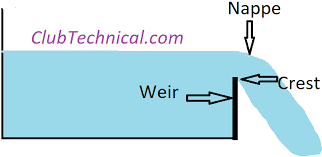PRESSURE FILTERS
Pressure Filter
Typically, the pressure filters are built as plate-and-frame filters, in which the sludge solids are captured between the plates and frames, which are then pulled apart to allow for sludge cleanout
Construction and Operation of Pressure Filters
Pressure filters are similar in bed construction to rapid gravity filters, except that they are contained in a steel pressure vessel.
Perforated pipes or a steel plate with nozzles are used for collecting the filtered water and for distribution of the wash water and air scour.
The steel pressure vessel is cylindrical, arranged horizontally or vertically. With a pipe lateral underdrain system the bottom of the vessel is usually filled with concrete so as to obtain a flat base.
In the plenum floor design a steel plate into which nozzles are screwed, is used.
In a horizontal vessel, sometimes vertical plates are welded inside to give a rectangular shaped sand bed within the cylinder so that the bed may be washed evenly and there are no ‘dead’ areas beneath which air scour and water pipes cannot be placed.
More commonly media is placed in the entire vessel such that the depth is equally distributed about the horizontal diameter of the filter.
The whole of the cylinder is kept filled with water under pressure and at the highest point an air release valve is inserted for the release of trapped air.
To avoid having to employ special transportation procedures for large loads the maximum diameter of filters is limited to 3–4 m and the length/height is limited to about 12 m..
The advantage of pressure filters is that excess raw water pressure is not lost when the filtration process takes place .
Pressure filters suffer from the disadvantage that the state of the bed under backwashing conditions and when the plant is working cannot be directly observed.
It is of vital importance, therefore, that every pressure filter is fitted with an open box or dish in the front of it, into which the wash water is turned so that at least any washing out of the sand may be observed and the backwash rate immediately reduced.
When coagulation or other chemical treatment is required chemicals are injected and mixed under pressure and flocculation must be hydraulically carried out in pressure vessels fitted with baffles.
The same applies when a contact tank is needed on the downstream side for disinfection.
The equipment required for air scouring pressure filters and for valve control is similar to that used for rapid gravity filters. The filtered water usually has enough pressure for backwashing and this is often used so avoiding the need for backwash tanks of pumps.
For a filter washed by separate air and water the required rate of application of water is about four times as great as the rate of filtration which is about 5–6 m/h.
Thus in a large filter battery of about 15 filters, groups of five filters can be taken out of service at a time and the combined filtrate from four of the filters can be used to wash the fifth filter, and so on, until all filters in the group are washed.
In large pressure filter plants arrangements are usually made to wash filters in groups at a specific time each day.
Monitoring of individual filters for loss of head is seldom done except when outlet flow control is used. In fact, because a large battery of filters is usually supplied by a common inlet bus main and the outlets from filters also connect to a common outlet bus main, it is only meaningful to measure the head loss across the battery of filters. Individual filtrates could usefully be monitored for turbidity.



Comments
Post a Comment